Thoughts on Green Beans and Spacing
jacoblockcuff (z5b/6a CNTRL Missouri
5 years ago
Featured Answer
Sort by:Oldest
Comments (22)
dirt_tracker Alabama Zone 8A
5 years agoUser
5 years agoRelated Discussions
Double row of green beans
Comments (7)jrslick I do this with bush beans and bush type peas only I do it seven rows across. Every square inch of soil here is precious, as we mostly have rocks. I make raised beds with a sifter (out of necessity because of the rocks). It was too tricky to get 7 rows in the space with string so I made a planting board. By the way I chose 7 rows because that was what I could reach working in from both sides. Peas and beans go in 3 inches apart in either direction. The planting board I made can make 7 rows across and 5 seed holes down each row. I just lift the board with the handles and line it up and press again. It goes pretty fast by myself and even faster with a person on either side. Then just drop the seeds in the holes and tamp. I learned about planting wide rows from a book by Dick Raymond. Joy of Gardening. I plant carrots, beets, swiss chard, onions, cabbage, kale, etc in wide rows. I just adjust the width of the row and method of planting to the vegetable I am growing. I will never plant any other way unless the space I am using won't allow it....See MoreGreen Beans--Blossoms, but no beans?????????
Comments (26)I have been growing pole beans for 30 years (10 in California & 20 in Missouri) and this is the first year that I have beautiful plants, lots of flowers and no beans. It was very hot (over 99) for over 15 days, but I've seen hot weather before and still got beans. The plants get regular water (from sprinklers) daily. the weather is back to normal and I am waiting patiently or results. I think maybe the seed (gurney's) is sterile. You just don't know with commercial seed anymore and their genetic engereening. i try to watch this and avoid buying GES. Beans for me usually come in in August with slow start in Late july, here it is middle of Aug and NO sign of even starting to produce. /is anyone else having the same results this summer?...See Moregrowing green beans and cucumbers vertically.....SFG...
Comments (13)I could be dead wrong on this, but here goes anyway.... Based upon what people have said the general consensus is this. The book on square foot gardening recommends that you plant 9 bush green plants per every 1' x 1' square. People from past experience have said that you plant that many plants in one 1' x 1' square it's going to overcrowd the plants; for various reasons overcrowding any kind of plant isn't good for it and it's going to be more liable to die as a result. People have recommended that you plant 4 bush green beans per 1' x 1' square. Also I do have other questions regarding Mel's recommendations with how many of each type of vegetable you can plant per square. For small plants (which is what I plan to grow mostly) you can grow this many of each type of vegetable per square according to the recommendations outlined in his book: This is the quote regarding how many of each type of plant you can plant per 1' x 1' square: "Here are some charts to help you plan a garden for one, two, or four people. You can mix and match crops as you choose. Each 1' x 1' square will hold any of the following crops: Small plants: 16 radishes 16 carrots 16 onions 9 spinach 9 beets 4 swiss chard 4 lettuce 4 parsley 4 marigolds Large Plants: 1 cabbage 1 broccoli 1 cauliflower 1 pepper 1 eggplant Vertical plants: 1 tomato 2 cucumbers 8 pole beans Now based upon his recommendations are these reasonable recommendations, or do you think these recommendations are overkill and/or not feasible. If it's not feasible to plant that much stuff with any of the vegetables recommended for a 1' x 1' square, then can somebody please give more realistic recommendations for how much of each type of the above veggies to plant in a 1' x 1' square. My biggest concern is I'll follow the guidelines, the plants will become overcrowded, and then they'll die. I'm on a limited budget and although it's feasible for me to do one square foot box, I really can't afford to have failed experiments. It would be a waste of my money, which I have a very limited amount of, and on top of this, as stated previously I'm on a very tight budget....See MoreItalian Flat Green Beans/Cranberry Beans?
Comments (4)I snap them into the size I want and water blanch them for about 3 minutes, cool in ice water for about the same time, dry, and put them into freezer bags. Sometimes I use my vacuum sealer, but usually not with beans... it just depends on how soon I think I'll be using them. You may want to cross-post this question into the Harvest forum. The regulars who post there are much more experienced than I with storing veggies. Just post the same question, and include a few lines about freezing/canning or whatever else. :-)...See Morejacoblockcuff (z5b/6a CNTRL Missouri
5 years agozeedman Zone 5 Wisconsin
5 years agozeedman Zone 5 Wisconsin
5 years agolast modified: 5 years agovgkg Z-7 Va
5 years agolast modified: 5 years agoUser
5 years agojacoblockcuff (z5b/6a CNTRL Missouri
5 years agolast modified: 5 years agodefrost49
5 years agozeedman Zone 5 Wisconsin
5 years agojacoblockcuff (z5b/6a CNTRL Missouri
5 years agozeedman Zone 5 Wisconsin
5 years agolast modified: 5 years agoUser
5 years agoLoneJack Zn 6a, KC
5 years agozeedman Zone 5 Wisconsin
5 years agolast modified: 5 years agoLoneJack Zn 6a, KC
5 years agolast modified: 5 years agodefrost49
5 years agoUser
5 years agozeedman Zone 5 Wisconsin
5 years agomxk3 z5b_MI
5 years agoUser
5 years ago
Related Stories

DECORATING GUIDESCool Color Palettes: Enviable Green and Blue Spaces
Freshen up tired interiors with dewy to inky hues that harmonize even as they help each other stand out
Full Story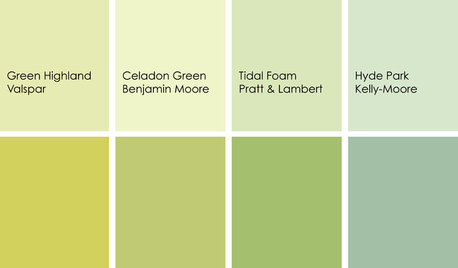
DINING ROOMSColor Feast: When to Use Green in the Dining Room
Squeeze a little lime into the space where you dine — green walls, chairs or accessories can be delicious if you do them right
Full Story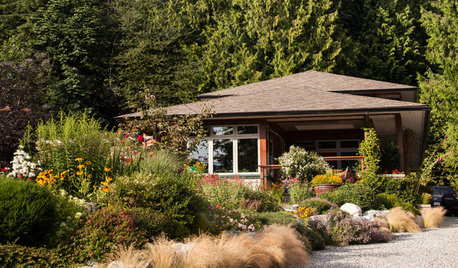
HOUZZ TOURSMy Houzz: Green Home Tucked in a Canadian Forest
Thoughtful craftsmanship and sustainability plus an exuberant edible garden make this bright home just right for a retiring couple
Full Story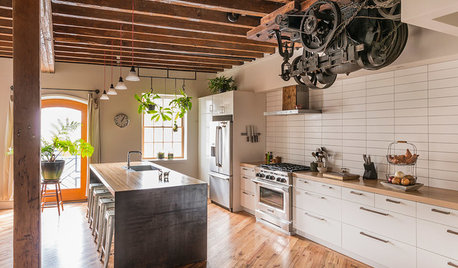
GREEN BUILDINGHouzz Tour: Pickle Factory Now an Energy-Wise Live-Work Space
A charming but poorly insulated 1880s Philadelphia commercial building becomes a spacious energy-efficient home and studio
Full Story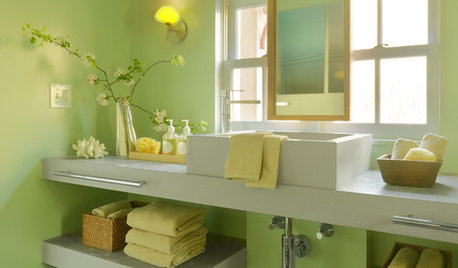
BATHROOM COLORSpring Forward With a Green Bathroom
Use nature’s freshest hues to make your space really sing
Full Story
COLOR10 Color Combos You Never Thought Would Work
Orange and blue? Purple and green? Yes and yes. Unlikely pairings can look great if you do them right
Full Story
COLORCreate Enviable Interiors With Green Design Schemes
Borrow from nature's playbook for your interior decorating with the color thought to boost balance and youthfulness
Full Story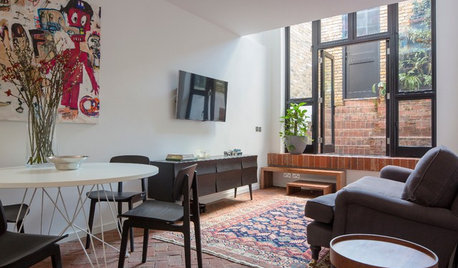
SMALL HOMESHouzz Tour: Thoughtful Design Works Its Magic in a Narrow London Home
Determination and small-space design maneuvers create a bright three-story home in London
Full Story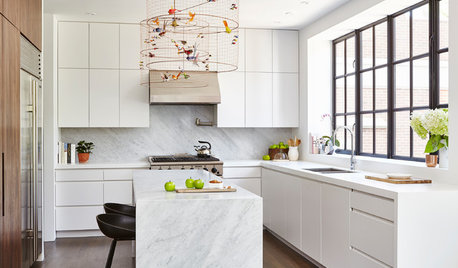
KITCHEN DESIGNNew This Week: 3 Kitchen Features You Might Not Have Thought Of
Follow the lead of spaces that include a special element for one-of-a-kind style
Full Story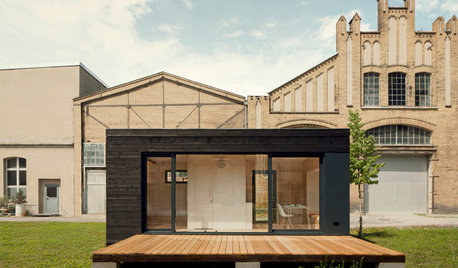
GREEN BUILDINGBuilt-Ins and Space Planning in a 205-Square-Foot Prefab
Experimentation leads to a business concept for small prefabricated houses that are self-sufficient
Full Story


User